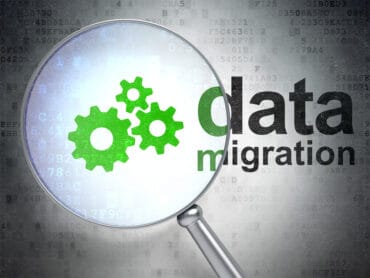
The data onboarding process must be improved and simplified to keep up with exponential data growth and rapid development of new SaaS products.
It seems as though new software products and applications hit the market weekly, even daily. These applications help increase productivity and efficiency and can make everyday tasks much more straightforward. But for any new application to work, it needs data – which has become a currency in the way we frequently exchange it. We can’t benefit from applications without data. Software applications are simply empty boxes until data is migrated over. Hence, data onboarding becomes ever-more important.
A customer can’t use a company’s product and get value from it if their data doesn’t import correctly into the product. For example, a marketer can’t effectively use a marketing automation solution without their leads. A business can’t sell eCommerce products without SKUs. An HR representative can’t properly use a payroll solution without accurate employee profiles.
A recently conducted survey to determine the state of data onboarding, or the process of importing data, was completed by more than 100 businesses across industries to gather input. The survey results reveal that more than 90 percent of respondents must transfer data from one system to another to run their businesses. Yet, more than three-quarters of these respondents cited that they “sometimes” or “often” run into problems with the data onboarding process.
See also: Data Onboarding: Overcoming the Challenge
Data onboarding explained
Data onboarding is importing a customers’ data to a Software-as-a-Service (SaaS) product. It’s a data transaction from one business to another. A customer’s data might be sourced from a previous software vendor or offline data sources such as spreadsheets, employee or patient files, and activity logs.
In industries such as eCommerce, healthcare, and manufacturing, where tremendous amounts of data are passing from one system to the next, data onboarding is required. But at the end of the day, every business – despite the industry – uses data to power their systems and requires data onboarding. A museum, for example, has digital assets, and these digital assets may need to be imported to a software application for storage and tracking purposes.
As the world becomes ever more reliant on digital-based data, the need to efficiently transfer data between systems becomes even more critical. That is why understanding the importance of data onboarding is crucial for any company. If not handled correctly, the data onboarding process can become a barrier to customer acquisition and effective internal business management.
So, who typically owns data onboarding in an organization? While individuals with various titles can be involved in data onboarding, the data onboarding survey revealed that the front-line responsibility for the process is typically handled by someone in an implementation, customer service, or customer success role. In the survey, 59 percent of respondents identified themselves as being in a “customer-facing” function.
Common data types and onboarding frequency
While data onboarding is a vertical/industry-agnostic issue (most businesses face the need to import data at some point), just over half of the survey respondents named CRM data as their primary data upload. Other types of data cited by respondents included eCommerce, HR/employee, marketing, healthcare, manufacturing, real estate, financial, and logistics. The breakdown:
- CRM – 51%
- Marketing – 33%
- Financial – 26%
- eCommerce -22%
- HR/Employee – 15%
- Healthcare – 13%
- Logistics – 13%
- Manufacturing – 7%
- Real Estate – 4%
The survey revealed that data onboarding is a frequent event for businesses. More than half of the respondents need to import data daily, with 21 percent importing data multiple times a day. While the majority of survey respondents are importing data daily – or multiple times a day – the process of data onboarding can be painstakingly slow. The survey went on to find out that, for half of the respondents, onboarding new data takes “hours” from start to finish and, for a quarter of the respondents, the process currently takes days. Even more surprising, one in four said the process requires weeks or months.
Importing methods
Almost a third of those surveyed said they import data using an in-house importing tool, while another 27 percent said they were ingesting data into their systems manually. Five percent said they were using an off-the-shelf third-party importer.
The results show that, among those surveyed, there isn’t currently a simple, standard way to import data. Respondents expressed that uploading data manually is a slow process involving Excel spreadsheets and templates that can complicate data onboarding. Specific problems that can arise from a manual uploading process include:
- Emails and support tickets from frustrated customers who can’t import their spreadsheets into the system.
- Import errors, which the receiving team has to manually clean in their database backend before it’s usable in their product.
- Data quality issues caused by a lack of data normalization
Common data import issues experienced
The survey uncovered several issues that respondents face when importing customer data. Survey respondents could select any and all data import issues they’ve faced. Nearly 70 percent of respondents mentioned data formatting and data validation issues. Other common problems included column matching (46%), data access (28%), data sensitivity (28%), and data volume (27%).
When asked in an open-ended format what they would change about the data import process, respondents offered a number of items that would be on their “wish list,” including:
- More “ease of use” and an “easier process” when it comes to data onboarding
- A self-service solution that would allow users to import data without extensive intervention
- Clearer upfront expectations for customers on what is needed from them
- Enable non-technical staff to easily import data
- A fast, seamless process
- Instant feedback on problems during the data onboarding process
- One-click intuitive onboarding process
Feedback from the respondents reinforces the need to educate the customer on preparing data for import and providing them with a tool that can simplify the process. Customers today are often forced to read through extensive tutorials or watch videos in the hopes that they can figure out how to import their own data.
The survey highlights that while the need to onboard data is growing, the process as it stands today is far from smooth. The data onboarding process must be improved and simplified to keep up with the exponential data growth and rapid development of new SaaS products. If not, importing data will become a serious bottleneck that will prevent users from fully realizing the benefits of the many new software products that are sure to come.





























